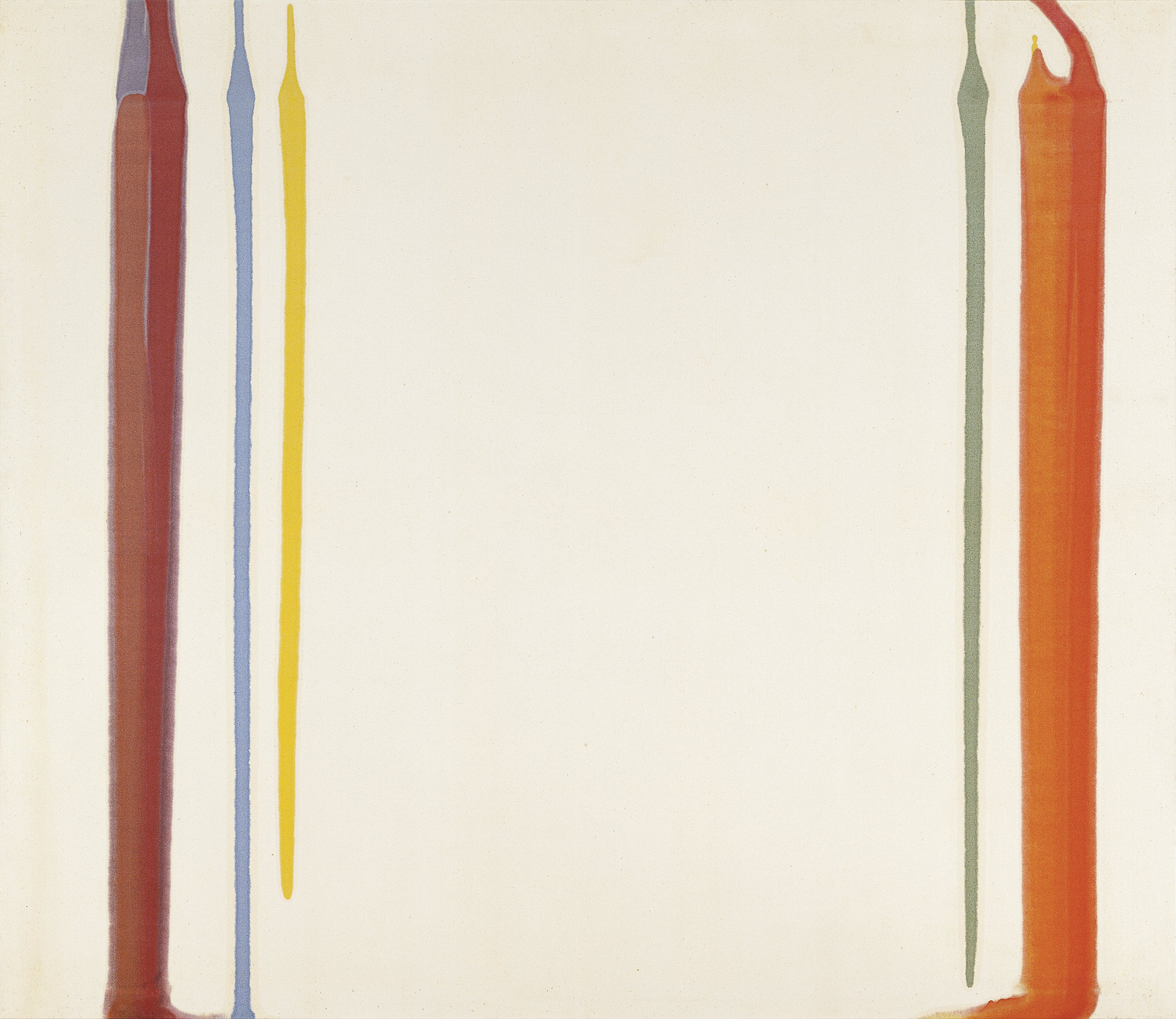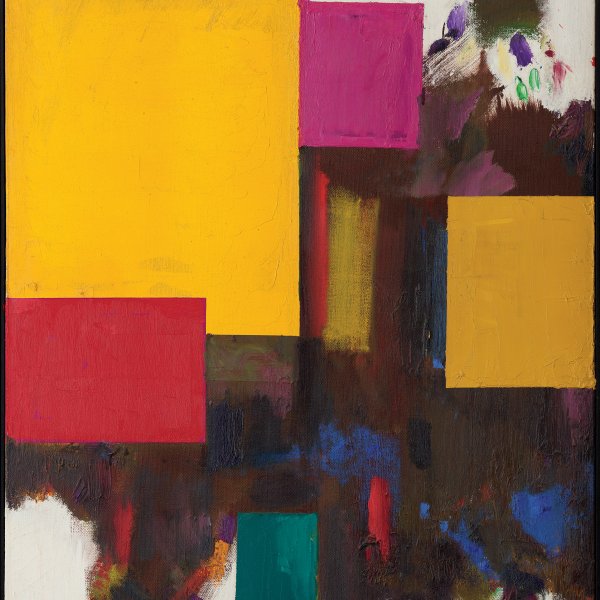Pillars of Hercules
Morris Louis has been regarded as a bridge between the Abstract Expressionists and Post-Painterly Abstraction. Like many American artists of his generation, Louis was concerned with material processes and optical problems, but evolved towards a less heroic and more lyrical style of painting, which made him one of the favourite artists of the formalist critics Clement Greenberg and Michael Fried. His personal style began to take shape in 1953 when he travelled from Washington to New York, where he not only saw Pollock’s first paintings for himself but also, together with Greenberg and his painter friend Kenneth Noland, visited Helen Frankenthaler. The sight of Mountains and Sea on her studio easel was a sort of apparition that would mark his subsequent artistic development.
Pillars of Hercules belongs to a set of Pillars painted in summer 1960, in which Louis refined the technique of spilling thin layers of paint onto the canvas, which he had begun in the cycle of Veils in previous years. In the large works belonging to this series, the artist poured on the paint in parallel bands of opaque colours that ran across the canvas. In this technique the acrylic colours, greatly diluted with turpentine, very quickly soaked the canvas, staining it and becoming an irreversible part of it. Jackson Pollock’s drip technique eliminated the painter’s contact with the canvas surface, and Louis also abstained from intervening in the execution process by allowing the colours to follow their own logic, driven by the force of gravity, resulting in compositions with a highly spontaneous appearance. However, this spontaneity is offset by the ordered, symmetrical compositional scheme that is fully under the artist’s control. In the composition of Pillars of Hercules, the bands of colour leave the canvas bare in the centre, creating the sensation of a void. The same metaphor of emptiness is found in the last series Louis produced, the so-called Unfurled paintings, which display the same parallel bands of paint that trickles across the surface but diagonally, from the corners of the painting, enabling him to heighten the effect of a central opening into the abyss.
Paloma Alarcó










